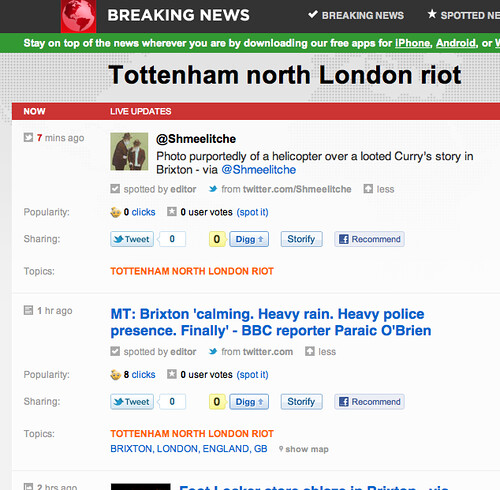This week’s jpod looks at how different publishing platforms in the news industry are approaching curation and aggregation of news, from sources across the web including news outlets, bloggers and social media platforms.
Journalism.co.uk’s news editor Rachel McAthy speaks to:
- Burt Herman, co-founder of Storify
- Mark Johnson, chief executive of Zite
- Rory Brown, co-founder of BriefingMedia, publisher of TheMediaBriefing.com
[powerpress]
In the spirit of curation, here is a list of some related reading and resources on this topic:
- Aggregation guidelines: Link, attribute, add value – Steve Buttry pulls together some standards journalists should bear in mind when aggregating news
- Five curation tools all journalists should know about – some recommended tools suggested by Journalism.co.uk
- New curation tool Bundlr sets sights on ‘untangling the web’ – Journalism.co.uk article on Bundlr
- Meet the curators – The Economist follows up on a tweet which caused much discussion during the SXSW conference
- Social media: what’s the difference between curation and journalism? – The BBC follows up on another Twitter debate
- 5 opportunities for dynamic curation tools – 10,000 Words suggests five ways to put curation into practice
- Are aggregation and curation journalism? Wrong question – GigaOm highlights the importance of putting the audience at the heart of the debate
- This Week in Review: A push for aggregation standards, and the end of an era for print – The Nieman Journalism Lab highlights recent efforts to set aggregation standards
You can hear future podcasts by signing up to the Journalism.co.uk iTunes podcast feed.





